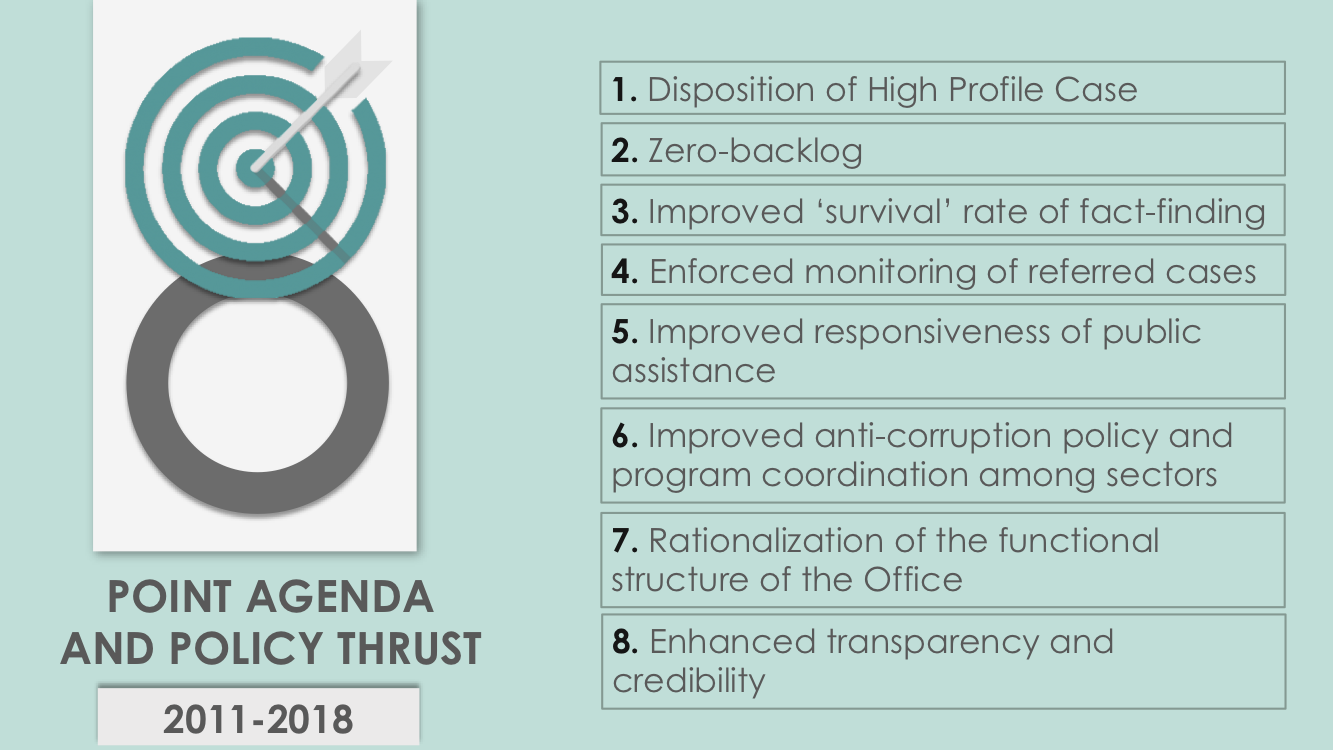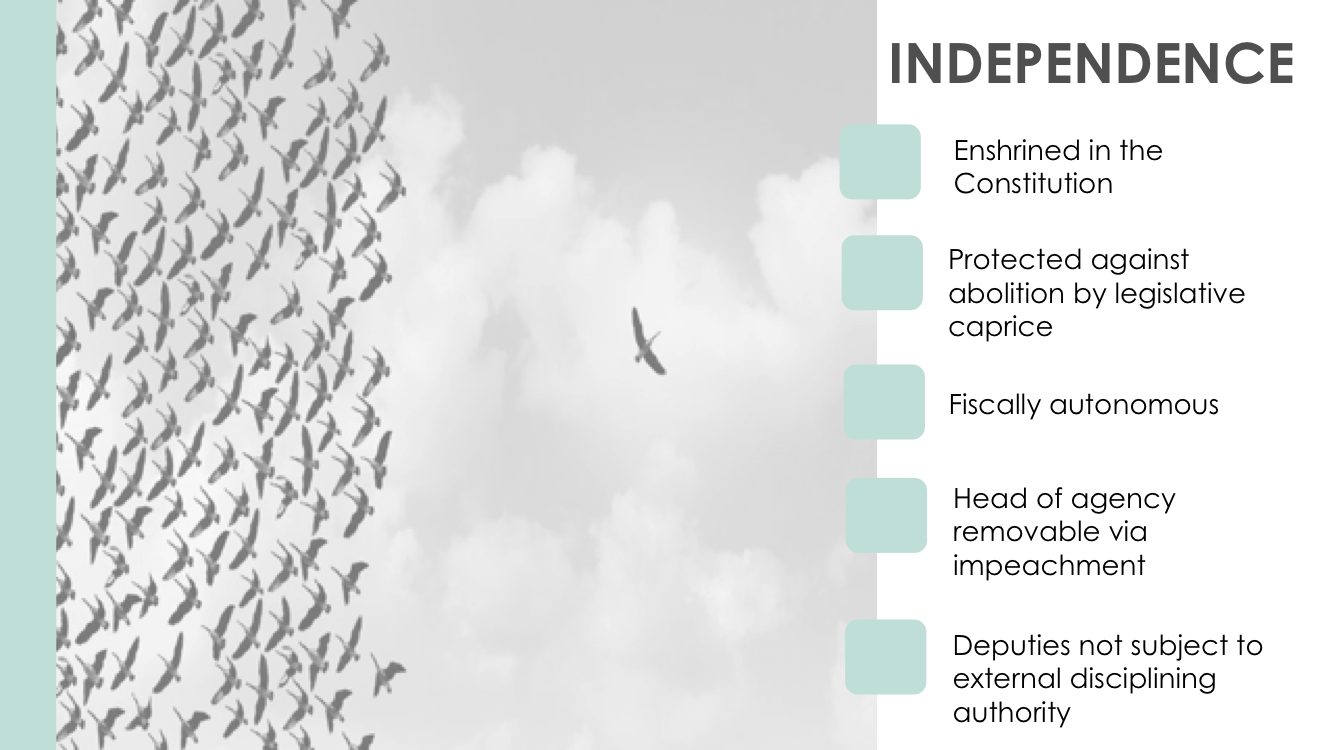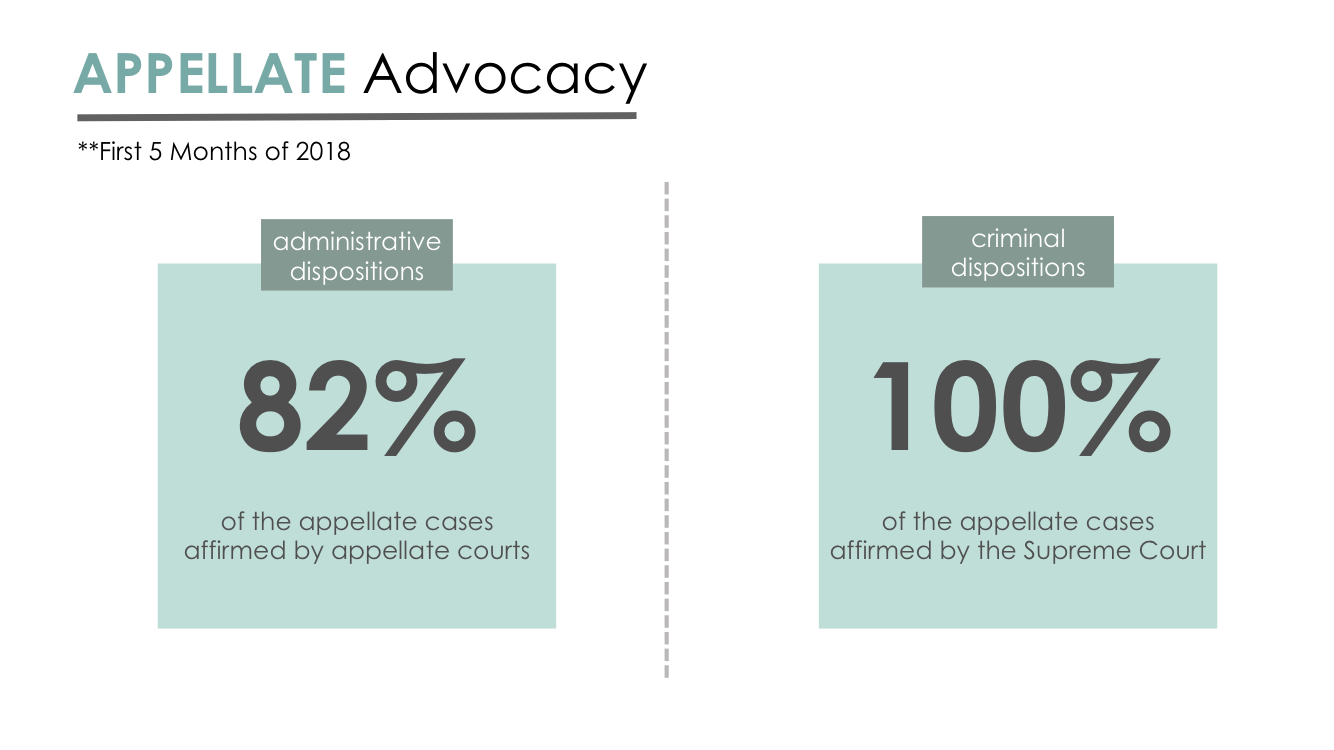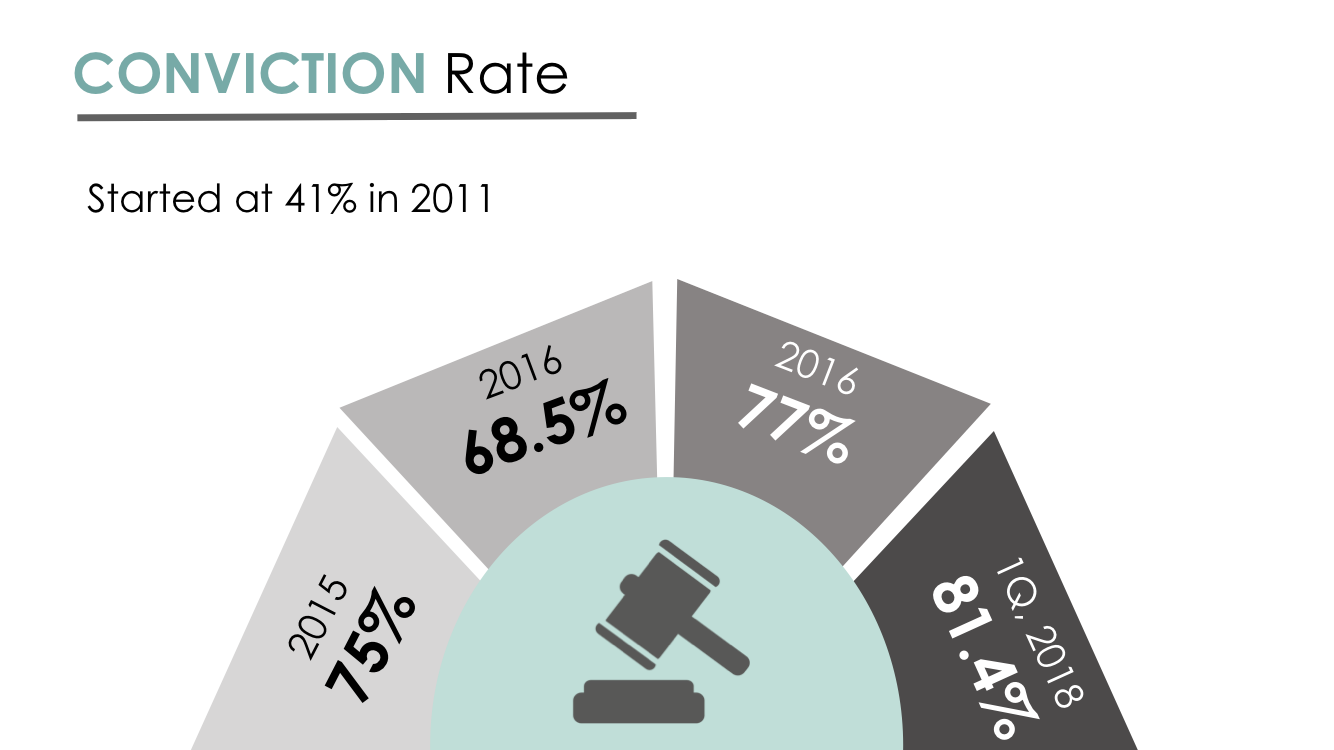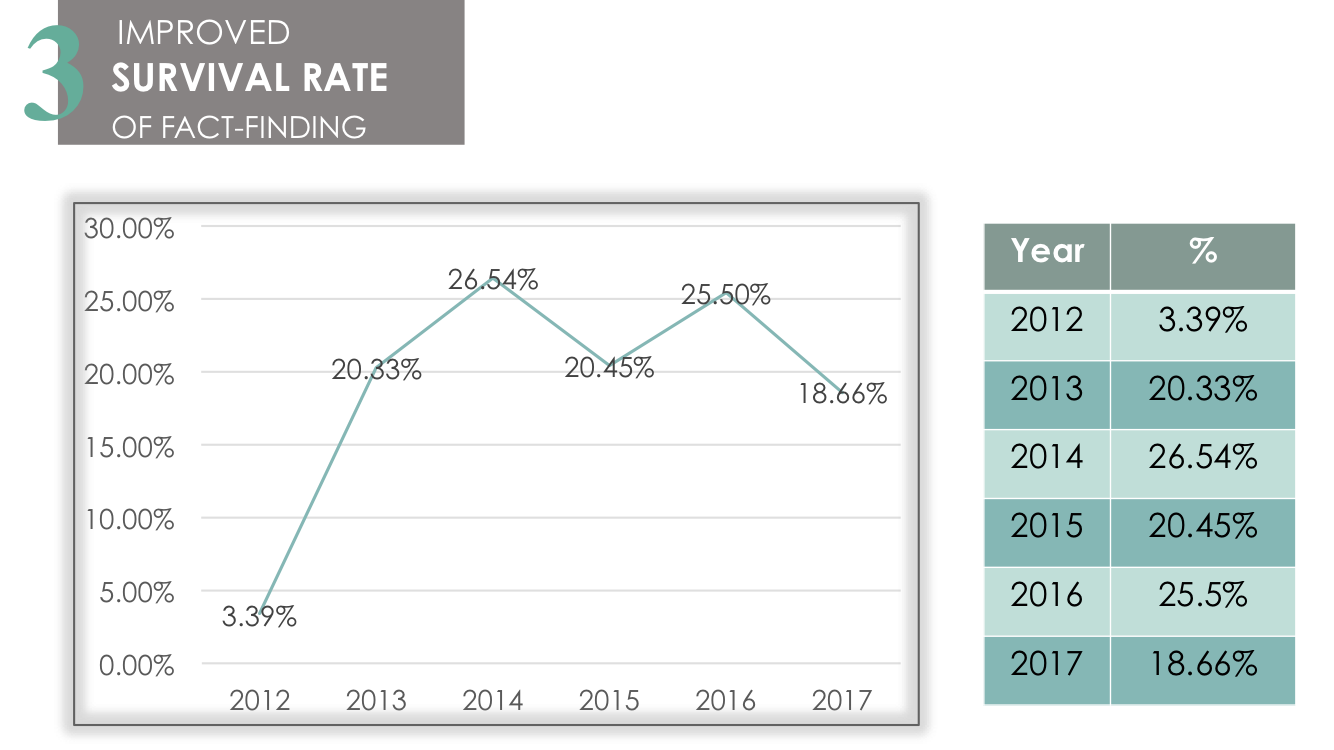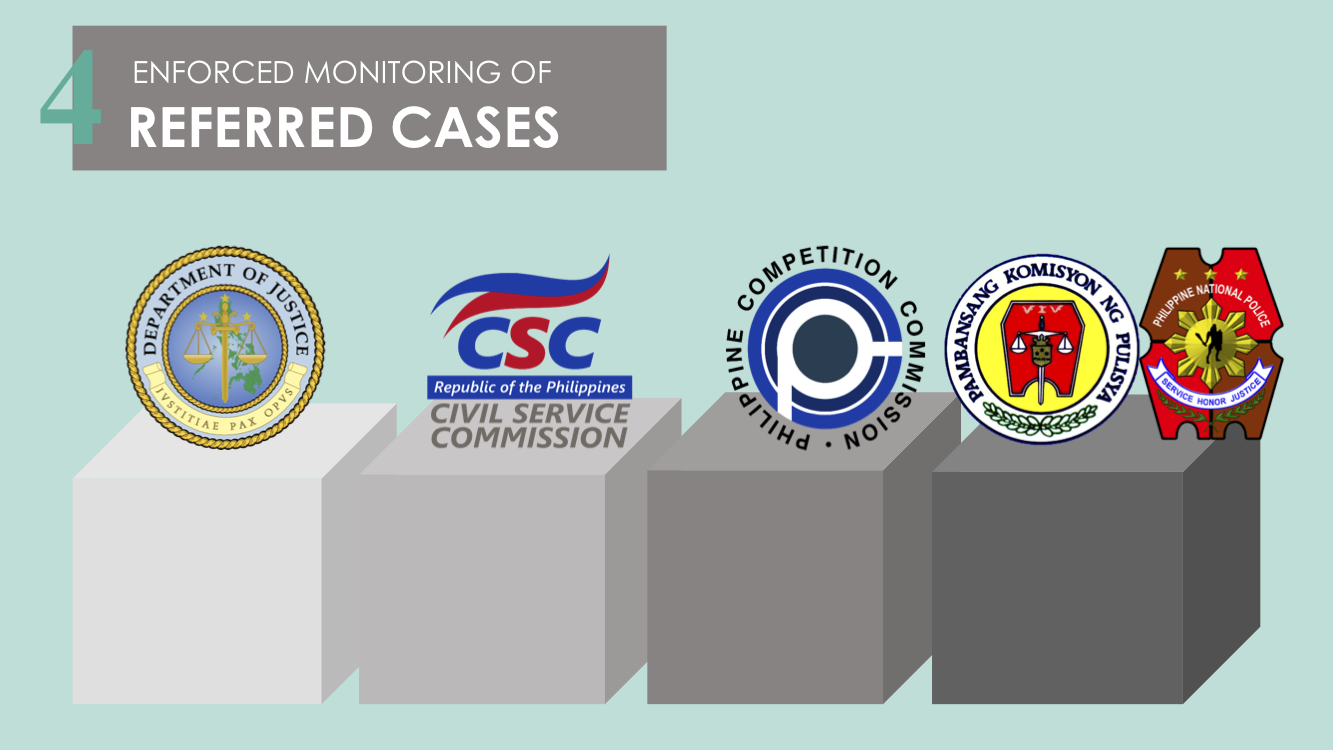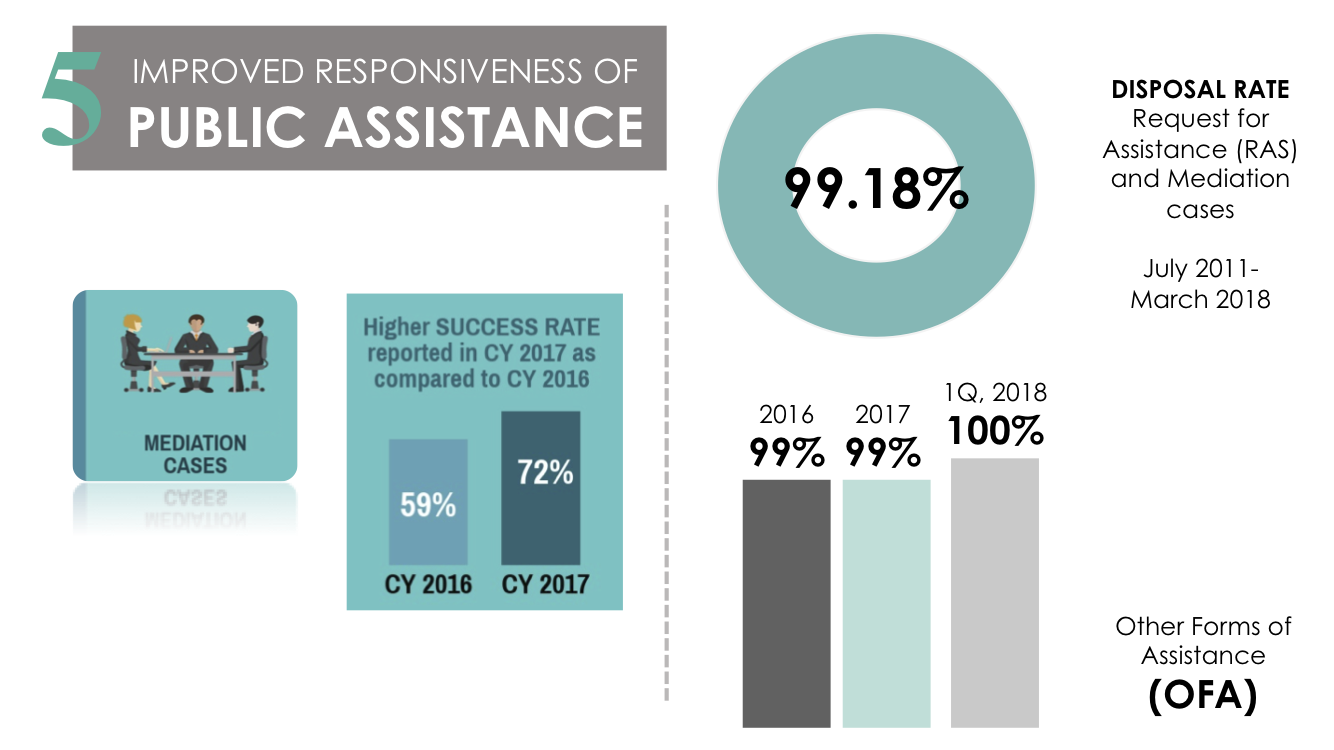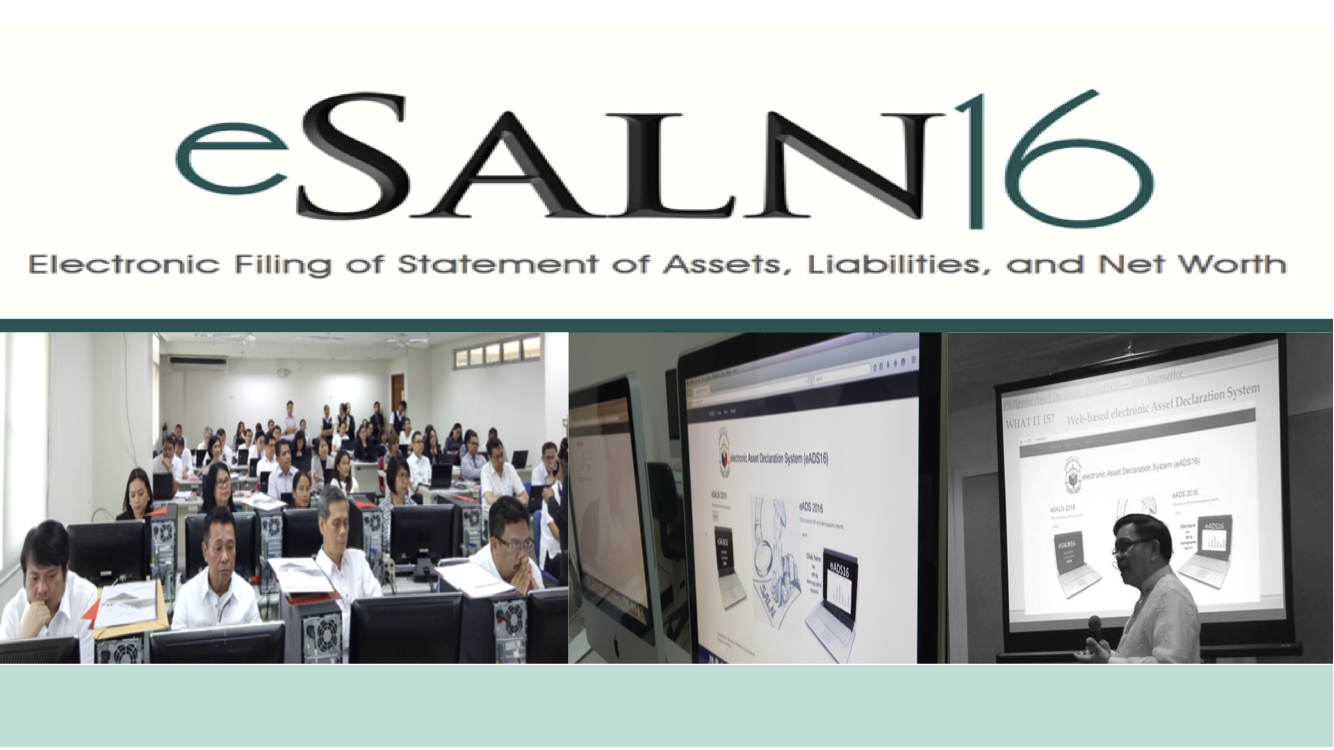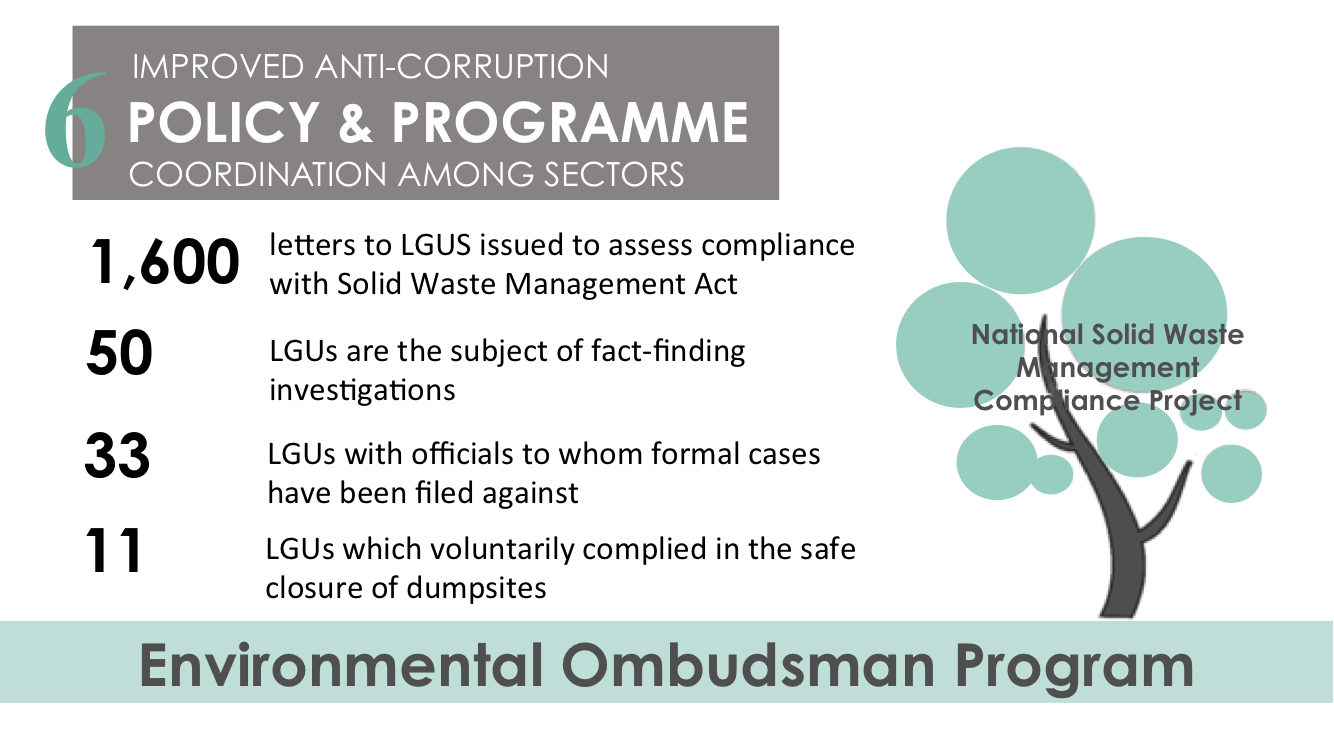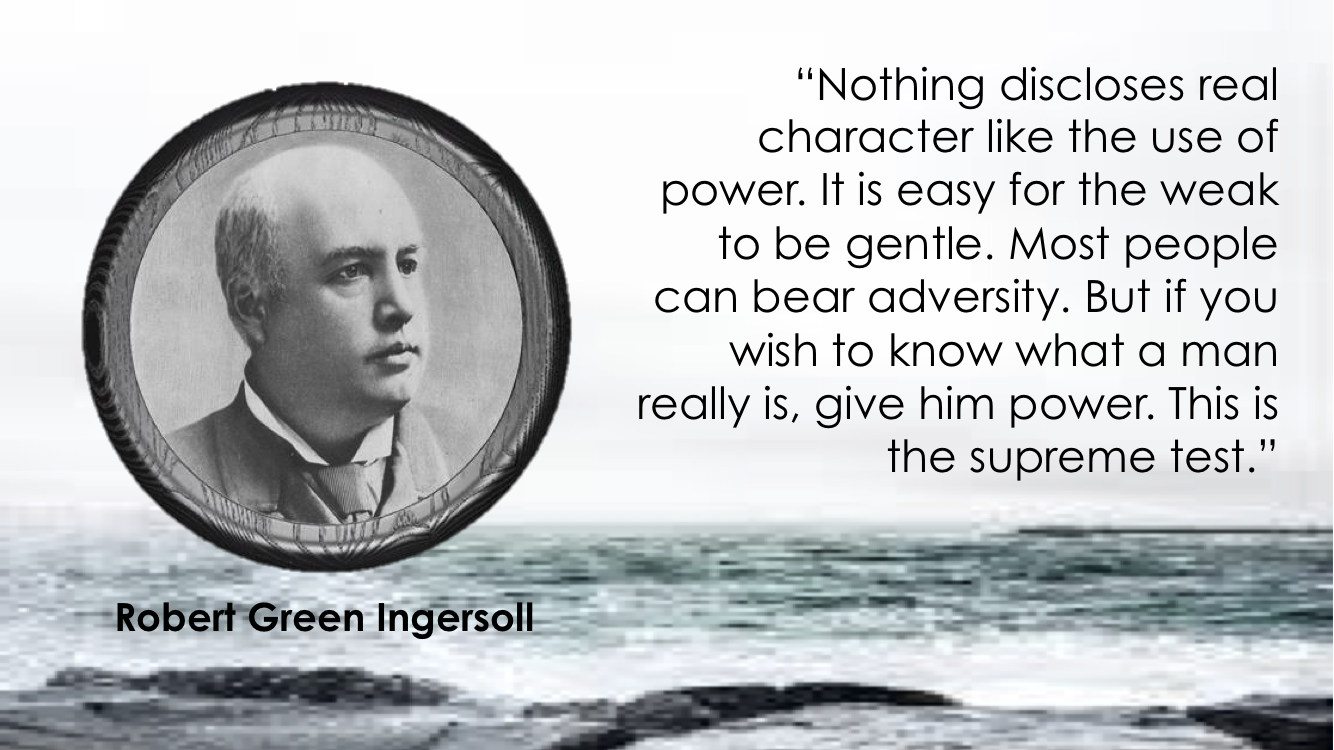WHAT policy and action reforms can enhance and sustain the campaign against crooks and corruption under the Duterte administration?
What follows is the speech of Justice Conchita Carpio-Morales, Ombudsman of the Republic of the Philippines, at the forum on “Democracy and Governance in the Philippines: Deficit, Surplus, and Unfinished Business” that was organized by the Philippine Center for Investigative Journalism, in partnership with the Office of the Ombudsman of the Philippines and the Right to Know, Right Now! Coalition, on July 5, 2018, in Pasig City, Metro Manila.
——————————————————————————————————————————————————————————————
BARELY A month before the end of my term as Ombudsman, I had told myself to refrain from accepting speaking engagements because I intended to put in even more focus on office work, striving to muster all the time and energies to reduce the remaining balance. Then again, in the last few speaking engagements that I have graced, the interrogatives are of the similar lines. I thought to myself, there is still this lingering need to cover a lot of areas, reach a wider audience, and involve a broader set of sectors.
There is no better time to do this than these days, when there is a good indication of public interest in the work of the Office of the Ombudsman. It is our privilege to have ignited this interest fromthe public, for it may be an expression of institutional relevance and a manifestation of the public consciousness. I would have wished to touch-base with more, but with our bounded time, we can only do so much.
There lies much of the stimulus to speak before you, untiringly repeating ourselves just to make the account of our work a little more lucid for the expectant public.The Office of the Ombudsman, under any circumstance and amid the volumes of cases, cannot resist the opportunity to disseminate information that remains our steady shield in countering misinformation.
Sadly, misinformation has distorted reality and conditioned this otherwise freedom-loving nation in: surrendering their rights to might, accepting intimidation as the norm in governance, dismissing human rights as figments of imagination and invention of criminal protectors, and ushering a realm of mistrust in the rule of law under the pretext of the dire need to effect the promise of change, swiftly, albeit unduly.
So here I am again today, as feisty as most of you accord me, to speak about how corruption in the public sector is being addressed by the Office, to introduce and re-introduce the reforms made, the milestones achieved, the balance of work, and, if I may, as occasional side notes, an unsolicited piece, for the consideration of the future leadership, on the direction of the Office of the Ombudsman.
Staying true to the mandate
As most of you are aware, the Office of the Ombudsman is an independent constitutional office tasked to uphold and promote integrity, transparency and accountability in the public service. Let me run down on the vital elements. As an independent office, the Office is protected by constitutional provisions that insulate it from political influences that potently cloud an impartial discharge of duty and blur the advocacy against impunity.
Since it is created by the Constitution, the Office is protected against abolition by legislative caprice. The head of office is removable only by impeachment, with deputies who are not under the disciplinary jurisdiction of external authorities. It comes as no surprise that those who have intended to circumvent the law would be uncomfortable and even insecure with the independence and fiscal autonomy it enjoys, making it not beholden to any powers-that-be.Such is the beauty of independence in the scheme of checks and balance.
The Office upholds integrity by means of striving to be, in itself, an ‘institution of credibility’ that gives equal protection to the people. It does not turn a blind eye to the misdemeanor and infractions of its personnel, hence the creation of the Internal Affairs Board that closely watches over and sanctions its own rank.
We have indicted a former Deputy Ombudsman for nondisclosure of a property in his SALN. Another has been fined and barred from public office due to grave misconduct. A Deputy Ombudsman and an Assistant Ombudsman were charged for tampering with official documents. We have also charged our own graft investigators for extortion. We have been transparent about these incidents, sometimes to the detriment of institutional reputation, but we offer no illusion as to the immaculate image of our people, so long as there is fairness in the process of hearing cases.
Concretizing the blueprint
The Office understands the enormity of the social malaise of corruption and that approaches to solving this problem is not limited to the powers of prosecution. There is more to the monstrosity of corruption than beheading it through punitive actions. Had punishment been absolutely and successfully deterrent, then integrity work would have been a walk in the park, anti-corruption would have been less relevant, good governance would have been on the high, and, as for me, retirements could have been earlier enjoyed.
Since the punitive approach is not the only conceivable means to effectively address corruption, the Office used other essential dimensions, giving birth to our 2011-2018 Policy Thrust and Eight-Point Agenda, operationally using punitive, preventive, and promotional strategies.
In terms of disposition of high-profile cases, the first in our list, the Office has prioritized resolving grand corruption cases, including the exposé on congressional discretionary funds otherwise known as the “PDAF scam” against several legislators and a number of public officials and conspiring private individuals. The latest count shows that there have been more or less 40 legislators from either Senate or House of Representatives, who are facing criminal indictment before the Sandiganbayan. And as you may know, the Office has recently indicted high-ranking officials on the controversial Disbursement Acceleration Program (DAP) case.
Where then does the claim of selective justice coming from? Is it selective when the law being applied sees neither political color nor political affiliation? Is it impartial when all parties have been heard and all points raised in the course of the legal process have been considered? Is it not independence when audacity to go against crooks even in the highest places is shown? Is it still selective when our decisions are open to be challenged before the appellate courts, which mostly affirm our decisions? In fact, in terms of appellate advocacy for the first five months of 2018, the appellate courts has affirmed our administrative dispositions in more than 82 percent of the appellate cases being defended by the Office, while the Supreme Court has affirmed 100 percent of the criminal dispositions in the appellate cases being defended by the Office.
You be the judge; we can only defend our position. For no matter how important public opinion is, the Office cannot fully operate on mere perceptions. There is the law to always turn to. The tendency of some quarters to rush to prejudgment when the case is still being assessed on the merits in observance of due process should not shake our values. Our judicious attention to the discharge of our functions arms us to confidently stand our ground and defend our work against unwarranted intimidations and unhelpful distractions.
The prosecution’s conviction rate in the Sandiganbayan in 2011 was 41 percent. It increased to a high of 75 percent and 68.5 percent in 2015 and 2016, respectively. Last year, it reached an even higher rate of 77 percent, where one or more accused were convicted in 331 out of the 429 decided cases. As an update, the conviction rate for the first quarter of 2018 is already 81.46 percent. In the same quarter, the Office of the Special Prosecutor (OSP) has continued to have a high percentage of success in appellate advocacy. The rate of success before the Supreme Court is 76.19 percent and 72.73 percent before the Sandiganbayan.
In 2011, we inherited a massive number of 19,000-plus cases, on top of the average annual intake of roughly 5,000 cases in each succeeding year. The collective efficiency of the workforce brought the number to a steady decline over the years, to a manageable number of around 6,000 by the end of 2017. We are confident to bank on this development and realize the zero-backlog docket as the Office rounds up its seven-year, eight-point Agenda. This is more than beating the deadline, but it is to end a culture of delays that erodes public trust and credibility of the Ombudsman process. The Office has long proven that it is not “Mona Lisa’s lair” and that cases do not lie there and just die there. They are being judiciously acted upon with speed and prudence.
As a matter of sustaining this gain, by the third quarter of 2017, we had implemented an office-wide Physical Inventory of Pending Cases. We are no better investigators if we do not validate and re-validate our data and figures. Just recently, the Office institutionalized the biennial physical inventory process with the signing of Office Circular No. 14 (series of 2018), which prescribes the guidelines for the conduct of periodic physical inventory of Ombudsman cases. This initiative hopes to put more integrity to our work and better approximation, if not real time information, on pending cases for action, as also monitored in our electronic database called Complaints and Case Management System (CCMS).
The survival rate of our fact-finding is already at an average of 22 percent in the last five years, a significant improvement compared to the less-than-four-percent rate during my first two years in the Office. This goes to show that we have heightened efforts to improve the quality of our investigative work while, at the same time, weeding out baseless or frivolous complaints at the first instance. This goes to show that we go by the evidence, and we are not on a witch-hunt.
If there is no evidence, complaints do no survive or merit any further proceedings. This was made possible through continuous training and education in specialized techniques such as forensic engineering, accounting, and auditing. We have a number of development partners sharing both resources and expertise on these areas. Capacities and processes need further improvement if the Office is to bring the survival rate toa higher level, especially when it is measured on two levels pertaining to the indictment rate and punitive rate. At any rate, securing convictions of erring public officials is the key target.
In fortifying the credibility of the Office, it does not preach “all bark, no bite.” To keep it from becoming a “eunuch” or a toothless tiger, it makes sure that it keeps an eye on the enforcement of its directives as a disciplining authority through its agenda on enforced monitoring of referred cases. For quite some time, there was no functional unit and mechanism dedicated to the monitoring of administrative penalties against erring public officials. Monitoring was on a need basis and not a mainstream function.
In December 2013, our Prosecution, Information, Evaluation and Monitoring Services (PIEMS) commenced its function of monitoring the compliance with the directives to implement the penalties imposed on respondents. In the same vein, we have effected memoranda of agreement (MOAs) with the Department of Justice, the Civil Service Commission, the Philippine Competition Commission, the National Police Commission and the Philippine National Police, on the proper coordination and referral of cases.
Further, the area of improving responsiveness of public assistance has been identified as one of our offerings under the banner of “protecting the people.” We understand that the speedy or prompt delivery of public services has the ability to shape an idea of a functioning bureaucracy.
For proper guidance of our own rank in dealing with our primary client – the people – we have issued directions and guidelines on handling Requests for Assistance in 2013, and we have expanded these guidelines in 2018 to include guidance on Other Forms of Assistance such as administration of oaths, response to queries, referral of recourse, actions on letters/documents, and the like.
The issuance of these guidelines has improved our handling of requests for assistance. In terms of mediation, there has been a higher success rate at 72 percent reported in 2017 over the success rate of 59 percent in 2016. Overall, from July 2011 to March 2018, the disposal rate for Requests for Assistance and Mediation Cases has been calculated at 99.18 percent, while the disposal rate has been 100 percent for Other Forms of Assistance.
In spite of the good numbers, we know that the ultimate judge of the impact of our assistance is the recipient. For this, we have setup a system of public evaluation and feedback. We act on negative feedback and refer complaints on the misconduct of Ombudsman personnel toour Internal Affairs Board.
As I have mentioned on several occasions, anti-corruption is not the function of prosecution alone, and is never the sole domain of Ombudsman. An improved anti-corruption policy and program coordination among sectors found its proper place in our eight-point Agenda.
The Office has crafted and implemented several anti-corruption programs along with multi-sectoral partners that introduced multi-faceted approaches and perspectives to fight corruption. For one, the Integrity Management Program (IMP), the flagship corruption prevention program that we implemented in partnership with the Office of the President, assesses the systems and processes of key government agencies in terms of their risks and vulnerabilities to corruption, and subsequently recommends corrective and preventive measures to the heads of agencies. It has been launched in over 30 government agencies, which are heading toward the implementation of integrity management plans based on the assessments. The number of government agencies, including those at the local levels, voluntarily signifying their interest to implement the program puts the idea of its bureaucracy-wide implementation closer to realization. The monitoring and evaluation tools are being refined and this can be an opportunity for further collaboration among different agencies.
The Integrity, Transparency and Accountability in Public Service (ITAPS) Program also answers the need for customized training modules for government officials and employees, thereby reinforcing a culture of good governance.
In a decentralized government, holistic mainstreaming of anti-corruption strategies also means bringing down interventions to the level of local governments that are similarly vulnerable to corrupt acts and transactions.One approach is the Blue Certification Program, which is designed to assess LGU systems and procedures on applications for permits and licenses using 87 standards, and determine its level of compliance. It attempts to correct deficiencies in LGU procedures and recommends a systematic operation free from bureaucratic red tape. The conduct of Blue Certification has been piloted in four cities in Metro Manila and other LGUs in key cities nationwide.
Our Campus Integrity Crusaders (CICs) program aims to enhance the capacity and the participation of the youth sector in promoting a culture of integrity through the development and enhancement of leadership skills and the values of social responsibility and good citizenship. It has accredited over a thousand student organizations in 2017.
One of the major anti-corruption projects of the Office is on the Electronic Statement of Assets, Liabilities and Net Worth or the eSALN project. A prototype of the eSALN was launched in May 2016 in collaboration with the Civil Service Commission and the Office of the President. It is a system that transitions the manual-based SALN to an electronic platform.
To date, a total of 3,245 civil servants have attended the hands-on orientation-training on the eSALN. Incidentally, a five-year bureaucracy-wide implementation of the eSALN is expected under the Philippine Development Plan (PDP) 2017-2022. Under the 2018 General Appropriations Act (GAA) of the Office, approximately PhP16 million has been provided for the eSALN initiative. The hope is that the eSALN would instill a culture of conscientiousness in the public disclosure of assets and liabilities.
Our move toward addressing sectoral corruption is borne out of an understanding that corruption exists in myriad forms in all areas and sectors. There is a need to approach it at a sectoral level using specialized programs. Our initial contributions are the Investment Ombudsman program and the Environmental Ombudsman program.
The Investment Ombudsman program aims to encourage local and foreign investments in the country and improve global competitiveness through prompt action on investor-related grievances and speedy resolution of investors’ complaints. Since its launching in 2014, it has taken in about 25 complaints, of which it has already resolved 23.
Meanwhile, the Environmental Ombudsman Program has been handling prioritized, high-value cases involving corruption in the environmental sector and violations of environmental laws involving high-ranking public officers. At the forefront of carrying out its mandate, the Environmental Ombudsman (EO) Team has been supporting the aggressive implementation of the Solid Waste Management Voluntary Compliance Project since 2013.
It has issued 1,600 letters to local government units requesting them to assess their observance of the legal requirements and standards. Fact-finding investigations were thereafter initiated against 50 LGUs across the country, involving more than 500 officials, which were the subjects of the complaints filed by the Solid Waste Management Commission. The Program has been instrumental not only in the filing of formal cases against officials in 33 LGUs, but also in the safe closure of dumpsites in 11 LGUs. Imagine what this could do for several communities after a full-blown implementation of the Program.
In 2013, we also operationalized the Project Management Bureau, not only to handle donor-assisted projects, but also to provide a dedicated workforce to ensure a coordinated anti-corruption program. With the assistance from development partners, such as the ADB, British Embassy, INL, UNDP, UNODC, USAID, and the World Bank, programs and projects focusing on institutional capacity assessment, systems enhancement, capacity building, and knowledge-sharing were implemented. One of these is the formulation of the National Anti-Corruption Road Map, which has been adopted during the 3rd State Conference on the United Nations Convention against Corruption (UNCAC). The same is being revisited and refined, attuning to times and related developments. As it is planned to cover a wide-range of actors, state and non-state alike, your participation and contribution in the forthcoming consultations would be material.
Institution-wise, we have also made strides in the rationalization of the Office’s functional structure, by restructuring offices to augment the manpower and filling of positions in a multi-disciplinary perspective. This initiative will be completely realized once the Department of Budget and Management (DBM) fully approves theentire restructuring proposal.
Last, but definitely not the least in our priority, is the enhanced transparency and credibility of the Office. I think all of the aforementioned initiatives are contributing to this goal.Our regular reports are being uploaded in the Ombudsman website. Decisions in high-profile cases are being publicized. We have maximized the use of technology and social media in information dissemination. Please like us on Facebook and follow us on Twitter through, by the way — our legitimate accounts, please. And yours truly has been consistently reporting and speaking in Integrity Caravans and public fora on various reforms, milestones, and updates.
Summing up
In a span of 30 years, the Office of the Ombudsman has been cognizant of addressing corruption at various fronts. Indeed, a strong prosecution potently deters corrupt actions and sends a message to the potential perpetrators that no one is spared so they better get their acts together. Its expertise in prosecution, however, has not limited the institution in combating corruption through prosecution alone. We know from the beginning that we will never make sense in the anti-corruption agenda if we only go on catching crook after crook, when they only seem to multiply in the fertile ground of corruption.
From what we have gathered, there really is a challenge on the preventive aspect because it has a broader scope that goes into the root of the problem involving not only monetary or economic concerns, but also behavioral, cultural, systemic and procedural factors.
The idea is for the Office to really start strong on the prosecution and set the tone on the resolute stance against corruption. But the larger aim is to create a credible and inspiring institution, so we can shift the perspective from “exacting accountability” to “inspiring accountability.”
The story of fighting corruption never ends, only the tone changes. And this time, we hope to leave positive ones.
If the next leadership would not turn a cold shoulder on the existing initiatives, wheels need not be reinvented, only improved. We believe in the reforms that have been instituted. To see them sustained until their impact can already be harnessed is a dream of this transitioning leadership.
The Office of the Ombudsman is not faultless. But the difference is its boldness to own up to its mistakes. We take governance seriously, and we don’t have the privilege to get away with blunder by dismissing it as jokes. We know how to rectify errors and we respect third-party opinions. Such is governance – a democratic one, at that.
As the fifth Ombudsman, with a light heart, I am confident of the reforms and the people I will be leaving the institution with. For the incoming leadership, the only option is to take care of these people who bore much of the pain and gain of integrity work.
Our worth as public servant may be concretely measured by cast-performance standards and statistics, but to borrow the words of the great Albert Einstein, “not everything that counts can be counted, and not everything that can be counted counts.” There is more to our mission than numbers and hard data that barely capture the nuance of our work, which only appear in the stories behind our case victories, forged partnerships, and instituted reforms. And so I always advise our people to never let external, and even internal, pressures sway their convictions.
To the public — you, as our partners — thank you for not wavering. The Office has a tough job but you did not hesitate. Since the dawn of my term, you have been there extending assistance. In the coming years, I hope that you would be that same unfaltering advocates of good governance. Do not abandon the institution. It needs your voice. The people need to assert transparency, demand integrity and exact accountability from the powers-that-be. After all, sovereignty resides in the people, and all governmental authority emanates from them. When the citizenry chooses to grant this power to their selected officials, the citizenry should closely monitor and see how these officials fare the test of character.
Abraham Lincoln was attributed this relevant dictum: “Nearly all men can stand adversity, but if you want to test a man’s character, give him power.” Indeed, a person’s character is tested not just by how one handles the hardships encountered, but also — and more significantly — by how he or she handles the power bestowed. Along these lines were the words of U.S. lawyer Robert Green Ingersoll: “Nothing discloses real character like the use of power. It is easy for the weak to be gentle. Most people can bear adversity. But if you wish to know what a man really is, give him power. This is the supreme test.”
Public officials thus need to account for the use of the power granted by the people. The people deserve to check whether these public officials pass or fail this test. If they seriously fail and commit abuse of such power, they should not go unpunished.
To the avengers of corruption, whatever may come, affirm your vision and focus on your work. Do not give in to the temptation of complacency and apathy in the challenging environment. Bring this nation to greater heights and never fail to extend an ounce of help, looking less at personalities, and looking more at institutions. — Speech delivered at the PCIJ Forum on “Democracy & Governance in the Philippines: Deficit, Suplus, and Unfinished Business, July 5, 2018, Pasig City, Metro Manila

